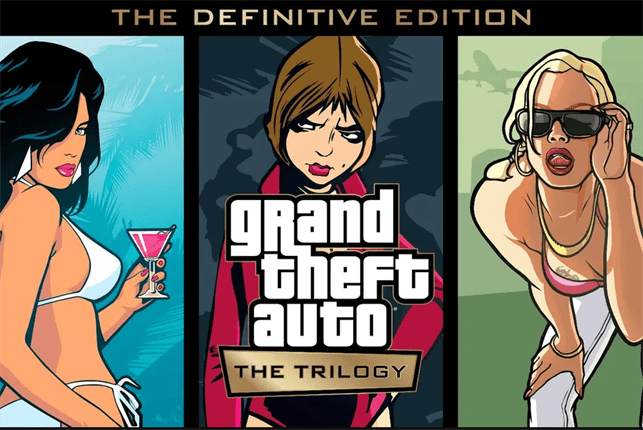Released by Rockstar Games on Nov. 11, “Grand Theft Auto (GTA): The Trilogy – The Definitive Edition,” is a remaster of three classic games: “GTA 3,” “GTA: Vice City” and “GTA: San Andreas,” which all originally released on the PlayStation 2 (PS2) back in 2001, 2002 and 2004, respectively.
The Grand Theft Auto series is an open world action-adventure game, parodying real life with its violence and stereotypes. These three games all revolve around a main character getting involved in gang-related violence while trying to stay one step ahead of the law.
Starting with the positives, as there are quite a few, perhaps the biggest improvement is the controls. Full camera rotation was added to “GTA 3” and “GTA: Vice City,” giving the player a full 360-degree view of the world during gameplay, instead of the locked-in look-forward view in the original version.
A weapon wheel was also added to the games, allowing players to easily change what gun or weapon is being used by selecting it from a pop-up circle, instead of cycling through weapons with one button in the original release.
Missions now have save checkpoints, meaning if you die during a mission, you have the option to try again at the checkpoint rather than having to restart the entire mission from the beginning like in the original games.
GPS navigation was also added. A mini GPS map of the world is always at the bottom left corner of the screen during gameplay. If you open up the map and select a destination, the GPS map will guide you through the fastest roads to get there. This is especially helpful during missions.
Other minor gameplay elements were improved. For example, in the original version of “GTA: Vice City,” if you pointed a gun at civilians, they would not start running unless you started shooting. In “The Definitive Edition,” civilians start screaming and begin to run as soon as a weapon is pointed in their direction.
Usually, the biggest selling point for a remaster of a video game is the enhanced graphics, but “GTA: The Trilogy – The Definitive Edition,” doesn’t always look that great.
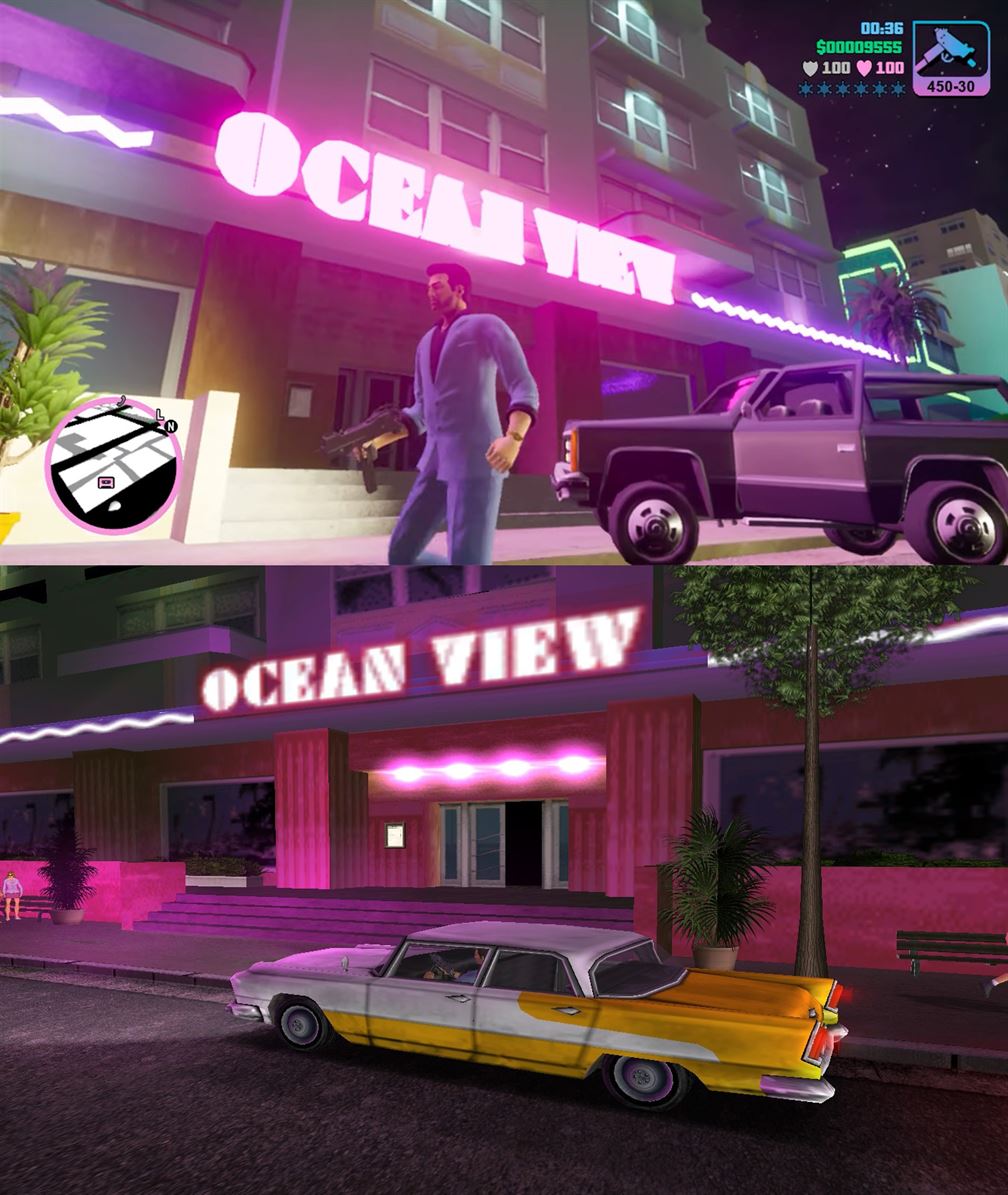
One of the hotels in “GTA: Vice City.”
Top: “Definitive Edition,” PlayStation 5, 2021
Bottom: original, PlayStation 2, 2002.
Photo courtesy Rockstar Games
Some areas certainly do; the neon lights all over Vice City’s boulevards really pop out and shine, looking less dull than they originally did on the PS2.
But other games, like “GTA: San Andreas,” lost some of their charm due to the graphical enhancements.
“San Andreas” takes place in and mirrors Los Angeles, California. The original game had this sunbaked, sunset tint that added a lot to the game’s atmosphere.
“The Definitive Edition” completely removes this sunset-style lighting, and what we are left with is a rather generic environment that lacks the charm of the original game. Part of its art style is revoked as a result.
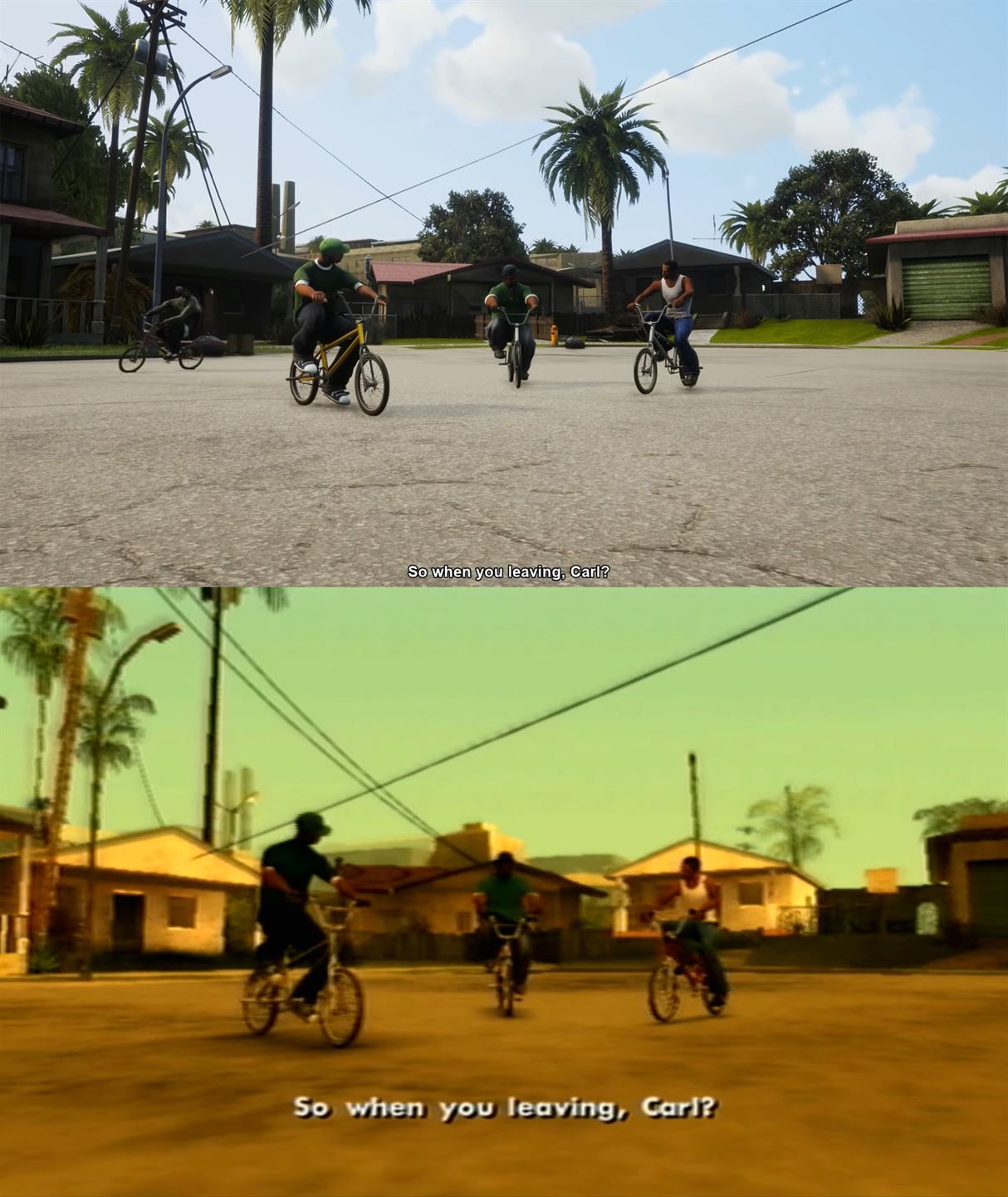
One of the first missions in “GTA: San Andreas.”
Top: “Definitive Edition,” PlayStation 5, 2021.
Bottom: Original, PlayStation 2, 2004
Photo Rockstar Games
The same can be said about “GTA 3,” especially when it comes to the rain. The original game had a muggy, depressing, noir-style with a greenish-blue tint during rain, which swirled around in the wind, giving it a three-dimensional feel and atmosphere.
But now in “The Definitive Edition,” it just falls vertically, and its effect doesn’t look all that appealing. The colors and their tints, like the sun in “San Andreas,” were also removed during the rain and replaced with darkness.
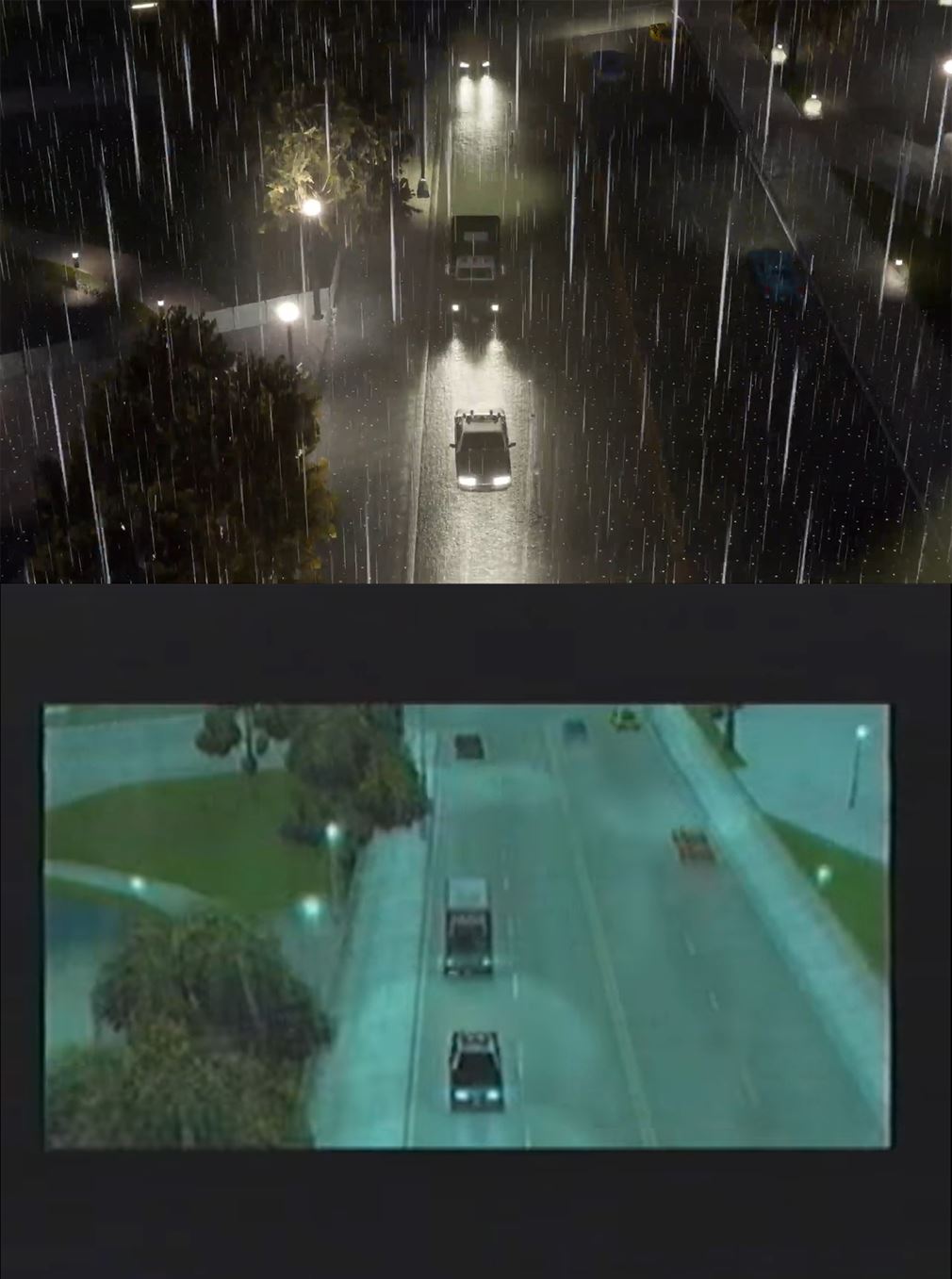
Part of the opening mission in “GTA: 3.”
Top: “Definitive Edition,” PlayStation 5, 2021
Bottom: original, PlayStation 2, 2002.
Photo courtesy Rockstar Games
Another huge disappointment is the lack of certain music tracks. In the game, you can drive and steal cars. While in the cars, you can listen to the radio, which all have real songs.
Between the three games, over two dozen songs featured in the original version were cut for “The Definitive Edition.” Perhaps most notable is the removal of all Michael Jackson songs. “GTA: Vice City” takes place in the 1980s, and you can’t have the ’80s without Jackson.
Other upsetting cuts were “Killing In the Name” by Rage Against the Machine, “Hellraiser” by Ozzy Osbourne and “Runnin’ Down a Dream” by Tom Petty.
This may not be a deal-breaker for most, but how can this be the “Definitive Edition” when key soundtrack pieces are not there?
Some character models somehow look far worse than the original as well. Many look silly and have completely different expressions than their PS2 originals.
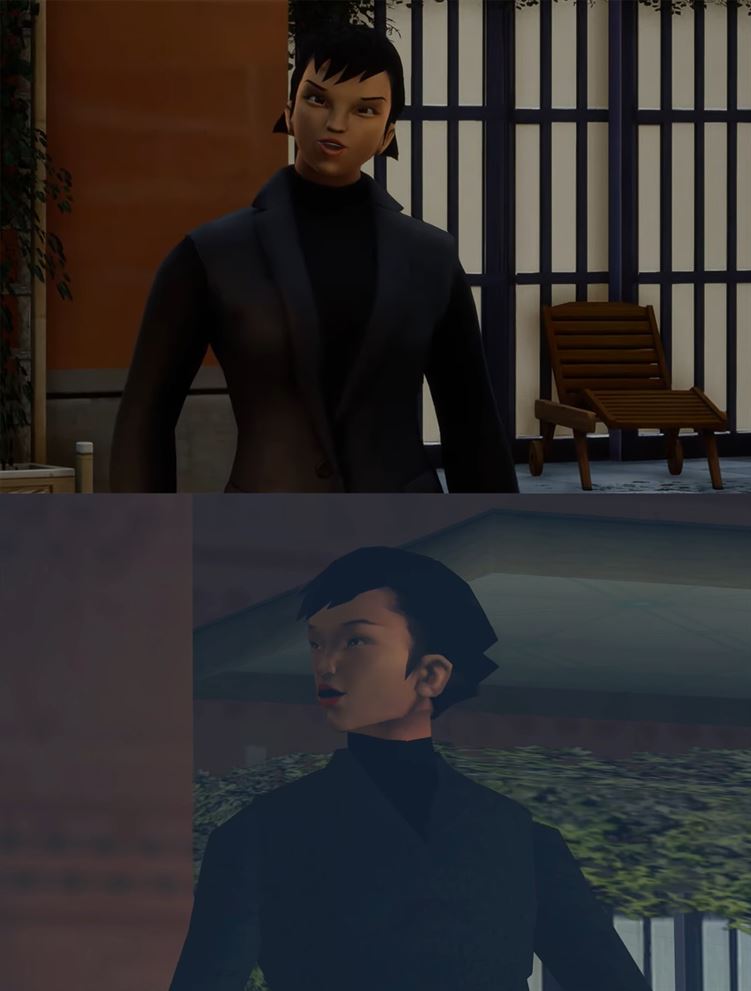
Asuka Kasen from “GTA 3.”
Top: Original, PlayStation 2, 2001
Bottom: “Definitive Edition,” PlayStation 5, 2021.
Photos courtesy of Rockstar Games
Some examples include Asuka Kasen from “GTA 3” and the Hispanic gang members from “San Andreas.” Characters that once looked edgy and intimating now just look goofy.
While the game does have updated character models and 4K textures on the PlayStation 5, Xbox Series X and PC, Rockstar Games chose to keep the original character animations, along with all of the original voice clips.
So what we have here is new, high-resolution textured models with old animations, which were simple, cartoony and janky because they were based on limited hardware from nearly two decades ago. The two mixed together just end up feeling a little awkward.
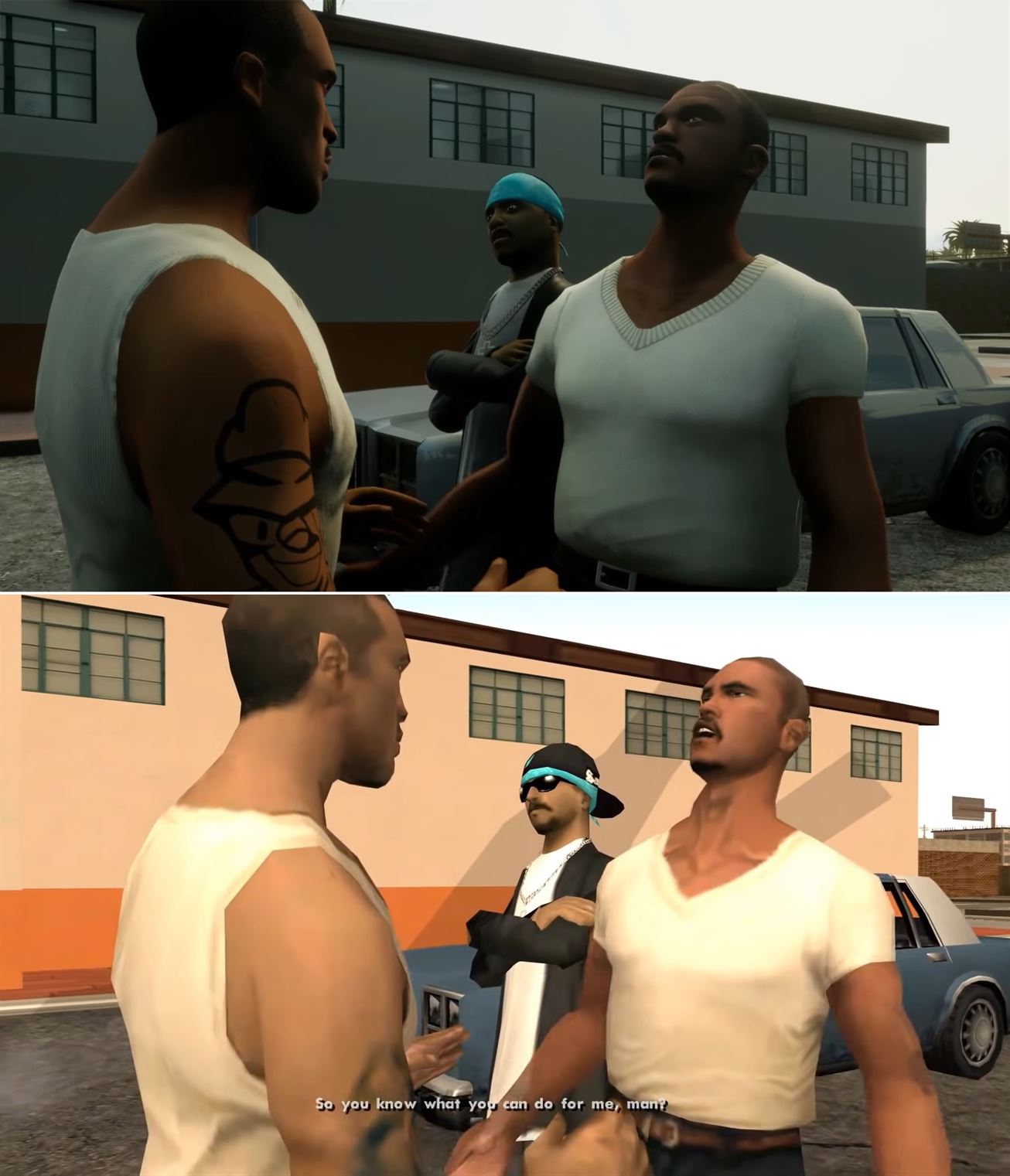
Gang members in “GTA: San Andreas.”
Top: “Definitive Edition,” PlayStation 5, 2021
Bottom: Original, PlayStation 2, 2004
Photo courtesy of Rockstar Games
“GTA: The Trilogy – The Definitive Edition” retails for $60. The price tag is not justified considering the amount of work Rockstar Games put into this remaster. All three games are still as fun as they were years ago, but this could have been so much more.
Rockstar Games chose to remove the digital copies of the original releases off of PC and consoles. This means new players who have never enjoyed these games before have no choice but to play, in my opinion, the inferior “Definitive Edition.”

